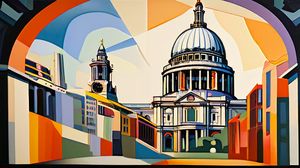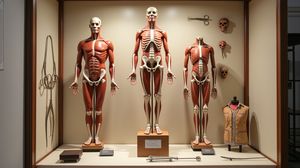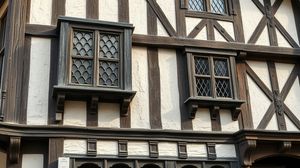
The Royal Courts of Justice on Strand, London, is one of the most majestic and significant buildings for the legal profession in the United Kingdom. Opened by Queen Victoria in 1882, it serves as the venue for the Court of Appeal and the High Court of Justice of England and Wales. Its stunning Victorian Gothic architecture makes it not only a place of great legal significance but also a visually arresting landmark that captures a piece of British history.
Designed by architect George Edmund Street, the Royal Courts of Justice took over eight years and more than four million bricks to complete. Street, curiously, passed away before the building's completion, never seeing his masterpiece fully realized. His design remains one of the finest examples of neo-Gothic architecture.
The building's exterior and interior are adorned with intricate stone carvings and stunning stained-glass windows. One particularly fascinating architectural feature is the central hall, which is often compared to the nave of a great cathedral. Visitors often find themselves in awe of the high ceilings and expansive open spaces that demonstrate both a depth of history and ambition.
Among the most interesting facts about the Royal Courts of Justice is its role as a filming location for myriad films and television shows. Its photogenic qualities make it a popular spot for the silver screen, appearing in productions that demand an iconic courtroom setting.
The Royal Courts of Justice are not just for lawyers and judges; they welcome the public in to observe legal proceedings, often providing a paradise for those interested in law or history. This aspect of the courts helps demystify the legal process for many and is an intriguing experience in its own right.
Deep within its archive, the Royal Courts of Justice holds some of the UK's most significant legal documents and has been involved in several landmark rulings that have shaped British society. These include cases surrounding civil rights and developments in the legal framework that defines everyday life.
Distinct from many old buildings in London, the Royal Courts of Justice is still fully operational with no elaborate security or ticketed entry for most parts — further adding to its charm and allure as an active and historical space that welcomes all.

Making the Most of Your Visit:
Start your visit in the awe-inspiring Great Hall. It's a massive space with an incredible vaulted ceiling that resembles the interiors of cathedrals. Take your time to look around; the architecture is a brilliant piece of design from the Victorian era that you won't want to rush through.
If you're interested in observing a court session, it's wise to check the schedule in advance online. Most hearings are open to the public, but some high-profile cases might restrict entry. Arrive early to get a good spot since popular cases can fill up quickly.
Look up as you explore the corridors and courtrooms. The stained-glass windows and small architectural details, like the stone carvings, often go unnoticed but are truly magnificent. They tell their own stories and showcase Gothic artistry at its finest.
Pop by the Bear Garden, the incredibly named waiting area where you might come across lawyers and barristers preparing for or relaxing after their sessions. It's an interesting spot to get a sense of the court's bustling atmosphere.
Don't miss the court's cafeteria for a refreshment break. It's not just convenient; it provides a perfect chance to soak in the everyday life of this active legal hub. You might even find a few legal eagles grabbing a quick coffee, adding to the authentic experience.

Visiting Times & Costs:
The Royal Courts of Justice is generally open to the public from Monday to Friday, excluding public holidays, typically from 9:30 AM to 4:30 PM. However, it is advisable to check the current schedule in advance as the opening times can vary depending on court proceedings.
Entry to the Royal Courts of Justice is free of charge, and visitors are welcome to observe court hearings that are open to the public. For those interested in attending specific cases, particularly high-profile ones, it is recommended to arrive early to secure a seat, as these sessions can attract large audiences.
Regarding accessibility, the Royal Courts of Justice strives to be accessible to all visitors. There are facilities including ramps and lifts to assist those with mobility challenges. However, it is advisable to check in advance or upon arrival if you require specific arrangements to ensure a smooth visit.

Address & Map:

Nearby:























